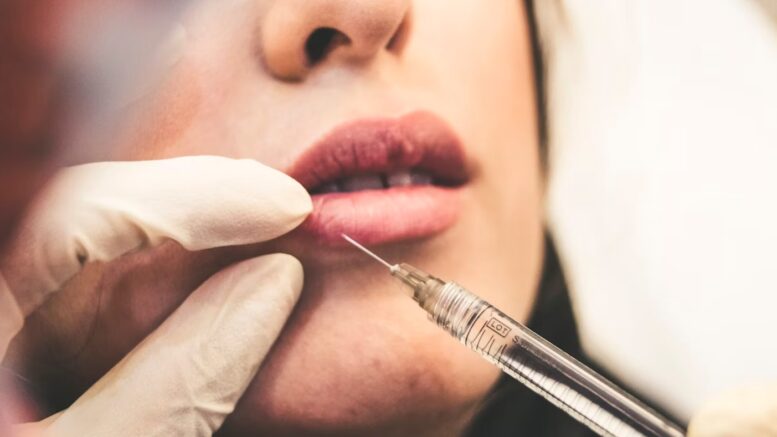Facial fillers have become a cornerstone of modern aesthetic medicine, offering patients a non-surgical solution to address various cosmetic concerns. As medical professionals, understanding the intricacies of facial fillers is essential, not only for providing safe and effective treatments but also for ensuring patient satisfaction. In this article, we will delve into the top things every medical professional should know about facial fillers, exploring the science behind them, the importance of patient assessment, and the evolving landscape of this transformative field.
The Science of Facial Fillers
Facial fillers, also known as dermal fillers, are injectable substances used to restore volume, smooth wrinkles, and enhance facial contours. While the concept of using fillers dates back to the 19th century, modern advancements have revolutionized this field. Understanding the science behind facial fillers is crucial for medical professionals.
One key aspect to grasp is the diverse range of filler materials available. Hyaluronic acid (HA) fillers, for instance, are among the most popular due to their natural compatibility with the skin and reversible nature. Conversely, collagen-stimulating fillers like Sculptra work by promoting collagen production, leading to gradual and subtle improvements. Additionally, calcium hydroxylapatite fillers provide long-lasting effects. Each filler type has its unique properties, duration, and applications, making it vital for medical professionals to tailor treatments to individual patient needs.
Patient Assessment: The Art of Personalization
Successful facial filler treatments begin with a comprehensive patient assessment. It’s not just about understanding the patient’s cosmetic goals but also evaluating their anatomy, skin type, and previous treatments. Medical professionals should carefully assess facial proportions, symmetry, and the presence of any contraindications. Moreover, considering a patient’s medical history, allergies, and expectations is essential to achieve optimal results and avoid complications.
A personalized approach is critical in the world of facial fillers. By tailoring treatments to each patient, medical professionals can enhance their natural beauty while ensuring safety and satisfaction. Moreover, discussing realistic outcomes and potential side effects fosters trust and ensures patients are well-informed. In the evolving field of facial aesthetics, staying up-to-date with the latest techniques and products is essential to provide patients with the best possible care.

The Evolving Landscape of Facial Fillers
The world of facial fillers is continually evolving, driven by technological advancements and patient demand. As medical professionals, staying abreast of these changes is vital for providing cutting-edge care.
One notable trend is the rise of minimally invasive techniques. Advances such as microcannulas have reduced pain, bruising, and downtime associated with injections. Additionally, the use of neuromodulators like Botox in conjunction with fillers is a popular combination for achieving comprehensive facial rejuvenation.
Moreover, research into new filler materials and innovative applications is ongoing. From non-surgical nose reshaping to jawline contouring, the scope of facial fillers is expanding. Keeping an eye on emerging trends and participating in continued education ensures medical professionals remain at the forefront of this exciting field.
Exploring Profhilo: A Breakthrough in Dermal Fillers
For medical professionals seeking to expand their knowledge of facial fillers, it’s essential to stay informed about innovative products like Profhilo. Profhilo is a revolutionary treatment that utilizes patented NAHYCO® technology and Hyaluronic Acid. It stands out in the world of dermal fillers due to its unique approach. Rather than providing immediate volumizing effects, Profhilo gradually rejuvenates the skin by stimulating collagen and elastin production. This innovative technique not only addresses fine lines and wrinkles but also improves overall skin quality and hydration. To incorporate Profhilo into your practice, you can buy Profhilo at FoxyFillers or explore this revolutionary treatment that utilizes patented NAHYCO® technology and Hyaluronic Acid at any other reputable website. Understanding the science and application of groundbreaking products like Profhilo can set your practice apart and offer your patients cutting-edge solutions in facial aesthetics.
Managing Complications: A Crucial Skill
While facial filler treatments can produce remarkable results, medical professionals must also be well-versed in managing complications. Complications, although relatively rare, can occur and range from mild to severe. It’s imperative to recognize the signs of complications early and take prompt action.
One of the most concerning complications is vascular compromise, where filler inadvertently enters a blood vessel, potentially causing tissue necrosis or blindness. Medical professionals should be adept in techniques to mitigate these risks, such as using a microcannula instead of a needle and having hyaluronidase, an enzyme that can dissolve HA fillers, readily available to reverse complications. Proper documentation and communication with patients about potential risks and what to do in case of complications are equally vital aspects of ensuring patient safety and trust.
Ethical Considerations in Aesthetic Medicine
Beyond the technical aspects of administering facial fillers, medical professionals should also be attuned to the ethical dimensions of aesthetic medicine. The pursuit of beauty and self-enhancement can be a sensitive and deeply personal journey for patients. Practitioners must maintain high ethical standards and prioritize the well-being of their patients.
This involves fostering realistic expectations among patients, being honest about what can and cannot be achieved, and discouraging the overuse of fillers or any treatment that may compromise a patient’s natural appearance. It also means adhering to a strong code of patient confidentiality and privacy. Moreover, medical professionals should continually evaluate their motives and biases to ensure they are not unduly influencing a patient’s choices.
In conclusion, facial fillers are a dynamic and transformative field within the realm of aesthetic medicine. Medical professionals must not only possess the technical skills required for safe and effective treatments but also be adept at managing complications and navigating the ethical complexities of this practice. By mastering these facets, healthcare providers can offer patients not only enhanced physical appearance but also the peace of mind that comes with responsible and ethical care. A holistic approach to facial fillers ensures both the physical and emotional well-being of patients, making it a fulfilling and rewarding aspect of medical practice.
